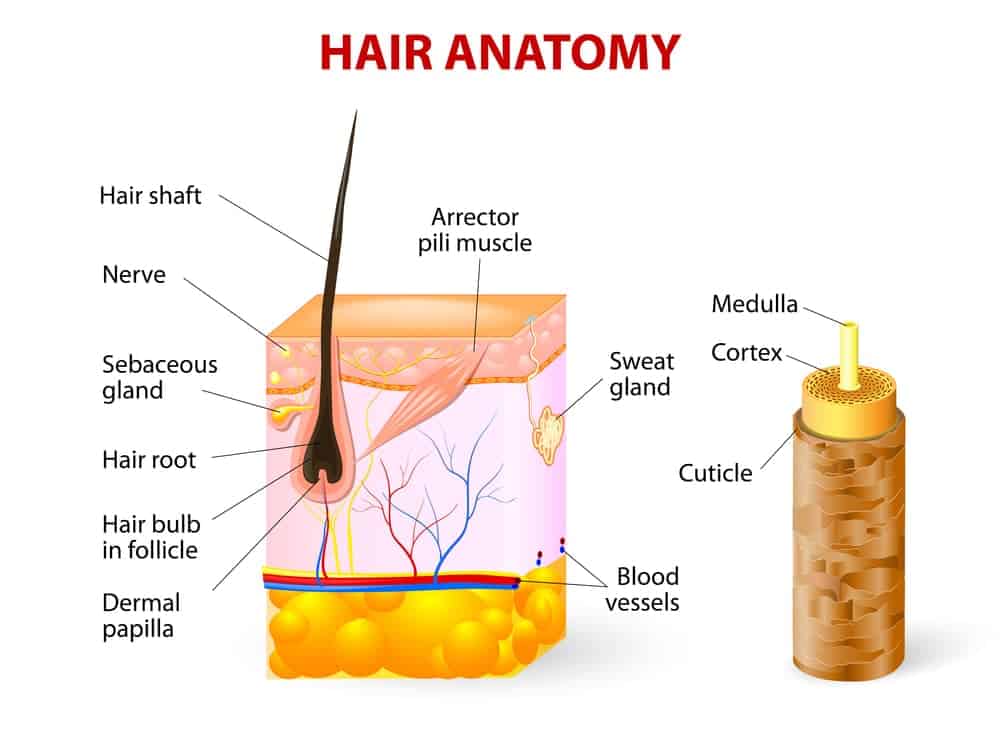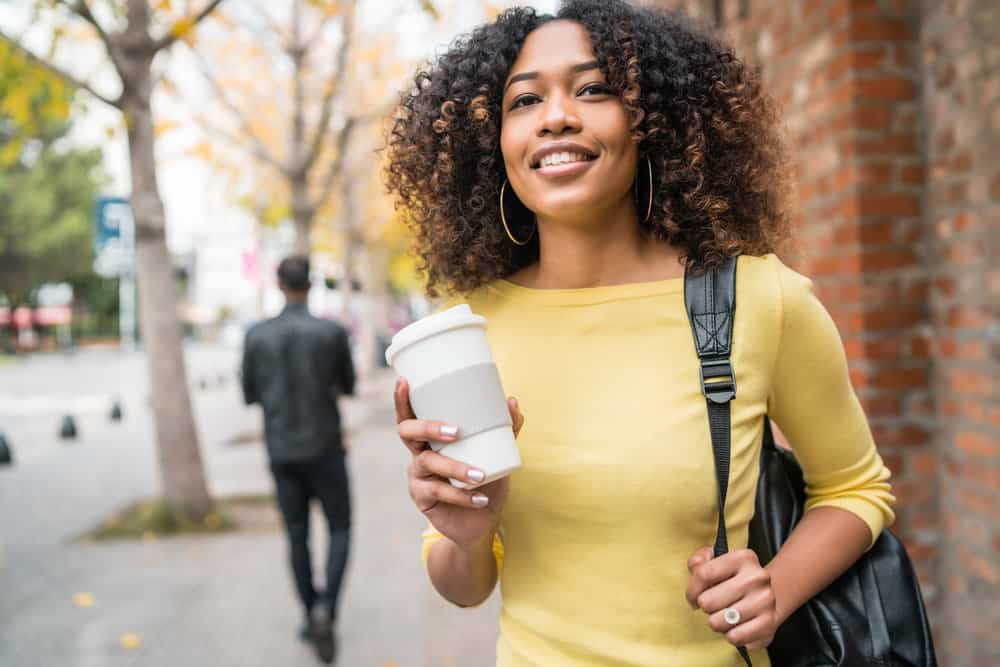
For curly girls, deep conditioning is a crucial part of their hair care routine. But with so many conflicting opinions, it can be challenging to figure out what works best for your hair. In this article, we'll explore the benefits of deep conditioning and how to deep condition hair at home.
We'll also address common concerns and questions around deep conditioning for curly hair to help you achieve healthier, bouncier curls. So, if you're ready to give your curls some extra TLC, keep reading!
Table of Contents
- 1 The Best Deep Conditioners for Natural Hair
- 2 Key Takeaways
- 3 How to Deep Condition Natural Hair at Home
- 4 How to Deep Condition Curly Hair for Beginners
- 5 How to Deep Condition Hair at Home: Step-by-Step
- 5.1 Step 1: Gather Your Supplies
- 5.2 Step 2: Detangle Your Hair
- 5.3 Step 3: Section Your Hair
- 5.4 Step 4: Place the Deep Conditioner in the Small Container
- 5.5 Step 5: Fill the Large Bowl With Hot Water
- 5.6 Step 6: Warm the Conditioner
- 5.7 Step 7: Set a Timer
- 5.8 Step 8: Check the Temperature
- 5.9 Step 9: Apply the Conditioner to Your Hair
- 5.10 Step 10: Retain the Heat
- 5.11 Step 11: Leave the Conditioner on for the Recommended Time
- 5.12 Step 12: Rinse and Style
- 5.13 Things to Avoid and Other Tips
- 6 Should You Deep Condition on Wet or Dry Hair?
- 7 What Is the Best Homemade Deep Hair Conditioner?
- 8 Ingredients That Penetrate the Hair Shaft
- 9 How to Choose a Hair Conditioner for Damaged Hair
- 10 What Opens the Hair Cuticle Naturally?
- 11 Do You Need Heat for Deep Conditioning?
- 12 Can I Heat up My Conditioner?
- 12.1 Is It Necessary to Deep Condition for 20-30 Minutes?
- 12.2 How Can You Tell If Your Hair Is Damaged?
- 12.3 How Do You Know When Your Hair Is Over-Conditioned?
- 12.4 Do You Deep Condition Before or After Shampoo?
- 12.5 Does Shampoo Need to Be Rinsed Off?
- 12.6 Should I Use Conditioner First, Then Shampoo?
- 12.7 Related Articles
- 13 Frequently Asked Questions
- 13.1 How Can I Deep Condition My Hair at Home?
- 13.2 How Long Should You Leave a Deep Conditioner in Your Hair?
- 13.3 Can I Deep Condition With Regular Conditioner?
- 13.4 Can I Just Deep Condition My Hair?
- 13.5 What Is the Best Homemade Deep Hair Conditioner?
- 13.6 Can You Deep Condition on Dry Hair?
- 13.7 Final Words
The Best Deep Conditioners for Natural Hair
Before we dive into the details of deep conditioning, if you're in a hurry or want a few recommended products that you can use for deep conditioning treatments, we've included a few products that we like:
- SheaMoisture Intensive Hydration Hair Masque
- Mielle Organics Mint Deep Conditioner
- Aussie 3-Minute Miracle Moist Deep Conditioning Treatment
- TGIN Honey Miracle Hair Mask
It's important to note that these are only examples of some deep conditioners we've personally tested with good results. There are many different products that you can use beyond what we've included on this list.
Key Takeaways
- Regular Conditioner vs. Deep Conditioning Mask: Regular conditioners work on the outer hair shaft. Deep conditioning masks penetrate hair follicles, making them essential for damaged hair.
- Best Way to Deep Condition: Wash your hair first. Apply the deep conditioning mask for 20-30 minutes at around 95°F. Then, rinse your hair with cool water. Using a regular conditioner before a deep conditioning mask can hinder absorption.
- Natural Ingredients: Shea butter, argan, and other natural oils can penetrate the hair cuticle. We recommend coconut and olive oil for hair growth and reducing frizziness. These natural ingredients are often found in deep conditioners.
- Fine Hair and Frizzy Hair Solutions: For fine hair, be wary of over-conditioning, which can make your hair limp. For frizzy hair, ensure regular conditioning, emphasizing the ends of your hair. Use a leave-in conditioner for added moisture.
- Hair and Skin Care Benefits: Shea butter and argan oil are natural ingredients that benefit your hair and skin.
How to Deep Condition Natural Hair at Home
In this video, Shaneice Crystal uses Shea Moisture Resilient Growth Protein Masque, As I Am Pomegranate Strengthening Shampoo and Conditioner, peppermint oil, apricot oil, castor oil, and almond oil within a deep conditioning routine that works well for ladies with type 4 hair types and potentially some type 3 curls.
How to Deep Condition Curly Hair for Beginners
In this video, Gina Marie provides a comprehensive guide to deep conditioning for curly hair, emphasizing its importance for maintaining hair health. She suggests deep conditioning once a week, depending on hair type and condition, and shares her personal routine, including using sulfate, paraben, and silicone-free products.
Gina demonstrates how to apply the deep conditioner and recommends using heat to help the conditioner penetrate the hair strands. She also advises rinsing with cold water to seal in moisture and cuticle health. Lastly, Gina discusses the difference between protein and moisture in hair care products and shares some of her favorite deep conditioning products.
How to Deep Condition Hair at Home: Step-by-Step

Step 1: Gather Your Supplies
- High-quality, moisturizing deep conditioner specifically designed for curly hair
- Small, heat-resistant container with a lid
- Large bowl
- Towel or a lid to cover the large bowl
- Timer (can be a smartphone or a kitchen timer)
- Plastic cap or a microfiber towel
- Wide-tooth comb or a detangling brush
Step 2: Detangle Your Hair
Before applying the conditioner, gently detangle your hair with a wide-tooth comb or a detangling brush. This will make it easier to distribute the product evenly and avoid unnecessary breakage.
Step 3: Section Your Hair
Divide your hair into 4-6 sections, depending on the thickness and length, to ensure even product distribution and make it easier to manage during the application.
Step 4: Place the Deep Conditioner in the Small Container
Scoop the desired amount of deep conditioner into the small, heat-resistant container. Adjust the amount according to your hair length, thickness, and level of dryness.
Step 5: Fill the Large Bowl With Hot Water
Fill the large bowl with hot water from the tap or use boiled water. Be careful when handling hot water to avoid burns.
Step 6: Warm the Conditioner
Place the smaller container with the hair conditioner inside the large bowl of hot water. Ensure the water level is high enough to heat the conditioner without overflowing into the small container. Cover the large bowl with a towel or a lid to trap the heat and help warm the conditioner evenly.
Step 7: Set a Timer
Set a timer for 5-10 minutes to allow the conditioner to warm up. After the time is up, come back and stir the conditioner to ensure even heating.
Step 8: Check the Temperature
Test the temperature of the conditioner by carefully touching it with your finger. It should be warm but not too hot. If it's not warm enough, leave the conditioner in the water until it reaches the desired temperature.
Step 9: Apply the Conditioner to Your Hair
Working one section at a time, apply the warm conditioner evenly to your hair, focusing on the mid-lengths and ends. Use a wide-tooth comb or your fingers to distribute the product thoroughly.
Step 10: Retain the Heat
Once all sections are covered, put on a plastic cap or wrap a microfiber towel around your head. This will help to hold in the heat and allow the conditioner to penetrate your hair shaft for better moisture and nourishment.
Step 11: Leave the Conditioner on for the Recommended Time
Follow the hair conditioner packaging instructions for the recommended time to leave the product on your hair, usually between 15-30 minutes. For added benefits, you can use a hooded dryer or a heated cap for deeper penetration.
Step 12: Rinse and Style
After the recommended time, thoroughly rinse the conditioner from your hair with cool or lukewarm water. This will help seal the hair cuticle and lock in moisture. Gently detangle your curls with a wide-tooth comb, apply your favorite styling products, and style as desired. Enjoy your soft, moisturized, and revitalized curls!
For a more comprehensive description of this method, click here to read our article on the baggy method.
Things to Avoid and Other Tips
- Don’t heat up the entire bottle of conditioner as this could create adverse effects such as bacteria growth or impact the ingredients.
- Don’t overfill the large bowl; it can spill over when you add the small container. Make sure there’s enough room so you can add or remove the small container without getting water into the container.

To improve the effectiveness and efficiency of your deep conditioning treatment, follow these tips:
- Your hair should be wet, and the conditioner that you use should have either coconut oil or olive oil on the ingredients list. However, if the conditioner being used does not have these ingredients, they can be easily added.
- Conditioner should be applied throughout the hair evenly. This is best done by taking the time to part the hair into sections and applying the conditioner to each section of your hair.
- Heat can be added using warm water. It only takes 15 minutes for "pure" water to fully saturate hair, whereas steam takes at least 18 hours to fully saturate the hair. This would imply that adding water directly to your hair is likely more helpful than using a hair steamer for this purpose.
- The length of time that the conditioner is left on the hair is a personal preference.
Our advice: Use your favorite conditioner for deep conditioning treatments. If it doesn't include an oil that will penetrate your hair strands, simply add some coconut oil or olive oil.
Should You Deep Condition on Wet or Dry Hair?
You should deep condition freshly washed hair using a process of (1) shampoo, (2) rinse, and (3) condition. So, you're ultimately deep conditioning wet hair if you follow this method.
There are many ways to deep condition your hair; some women deep condition their dry hair and then shampoo it (more about that later). Ultimately, for newbies, we recommend starting with freshly washed hair. Then, deep condition your hair after rinsing out the shampoo.
However, as you become more familiar with how your specific hair type responds to various hair treatments, you'll eventually develop a hair care regimen that works for your natural curls.
However, keep reading as we'll discuss some additional considerations depending on what you're trying to accomplish by deep conditioning.

How to Use Oil as a Deep Conditioner
When using olive oil or coconut oil as a conditioner (pre-wash treatment), it is important to apply the treatment to dry hair. It's important to understand that water repels oil. So, if you apply an oil-based treatment to wet hair, it won’t be as effective.
However, there are instances where you might want to wet your hair first or mix your oil with a conditioner such as:
- If you want to limit the amount of water that penetrates your hair
- You don’t like the way oil feels on your dry hair
- You are using the oil to seal in moisture
- The purpose of using the oil is to reduce the damage that may occur after washing your hair
How to Use a Water-based Deep Conditioner
When using water-based conditioners (i.e., hair masks, deep conditioners, or rinse-outs), these conditioners coat the hair to repair the damage, smooth the cuticle, improve hair elasticity, and soften and moisturize the hair.
For water-based conditioners, it is essential to find products like a shampoo that contains anionic (negative) surfactants or a rinse-off shampoo and a hair conditioner that contains cationic (positive) surfactants.
By using these types of products, the conditioner will have the maximum potential to penetrate the hair strands.

What Is the Best Homemade Deep Hair Conditioner?
The best homemade deep hair conditioner uses natural ingredients to hydrate and repair hair strands. Our recommended recipe includes avocado, egg, and olive oil. These ingredients contain rich omega-3 fatty acids that strengthen hair strands. Here's our custom recipe:
Best Homemade Deep Hair Conditioner
Ingredients:
- ½ an avocado
- 1 egg
- 1 tbsp. olive oil
- 1 tbsp. honey for added moisture and shine
- 1 tbsp. Coconut oil for deep penetration into hair follicles. It can also promote healthy hair growth.
Directions:
- Blend all ingredients into a smooth paste using a mixer or blender.
- Apply the mixture to your hair evenly, focusing on the ends and damaged areas.
- Let it sit for 20-30 minutes, then rinse thoroughly with cool water to seal the hair cuticle.
These ingredients nourish different hair types to meet their specific needs.
Investing in good hair care products can sometimes dent your pocket, but the results are worth it. I've experimented with numerous conditioning masks, including several DIY options. Yet, the standout for me has been the Keratase resistance damage hair mask in the iconic green tub. The silky, shiny, and revitalized look it gives lasts for days, truly masking any damage. While its price point might be on the higher side, it's unparalleled in results. A close second would be Amika’s soulfood, which is another favorite of mine.
Kira Byrd, barber, hairstylist, and hair care enthusiast
Ingredients That Penetrate the Hair Shaft
If you have natural hair, you will want to look for the following ingredients within your hair conditioner: water, coconut oil, hydrolyzed wheat protein, caffeine, cetrimonium bromide, and panthenol. In the upcoming sections, we've provided details about how each ingredient interacts with your hair.
When choosing a deep conditioner, it is important to check the ingredients to ensure you get one that will penetrate the hair's cuticle.
When tests are done to determine how well a conditioner will penetrate the hair, the temperature is typically set to around 95°Fahrenheit (35° Celsius).
This temperature aligns with your body temperature or the temperature of your hair if you were to apply the conditioner and put on a plastic shower cap.
The type of deep conditioner we recommend depends on the type of hair (really the condition of your hair) that you have, whether natural hair, damaged hair from bleaching, coloring, styling with heat, or using chemical relaxers or perms.
Once you finish reading this article, we encourage you to read our insider's guide to preventing and repairing heat damage using heat styling tools.
It includes a very interesting story from the point of view of someone who experienced heat damage. Below is a list of conditioner ingredients that will penetrate the hair's cuticle.

Hydrolyzed Wheat Protein
According to the International Journal of Trichology (source), hydrolyzed wheat protein must be left on for at least 30 minutes at 95° Fahrenheit for penetration to begin. Still, it should be kept on for 16 hours for maximum penetration.
The protein will penetrate the cuticle layers and into the cortex for unprocessed natural hair. For damaged hair, it will only penetrate the cortex.
The ingredient was uniformly tested on natural, bleached, colored, and chemically relaxed hair. When applying hydrolyzed wheat protein for test purposes, it was dissolved into water. The results showed some form of penetration for all hair conditions.
Coconut Oil
For penetration to occur with coconut oil, it must be left on overnight. The Journal of Cosmetic Science published a research study that showed penetration between the cuticle layers and the cortex. Coconut oil was only tested on natural hair and found to penetrate within dry hair.
Cetrimonium Bromide (N(CH₃)₃)
For penetration to occur with cetyltrimethylammonium bromide (CTAB), it must be on the hair for six hours at 98.6° Fahrenheit (or 37° Celsius). It was found that the cetrimonium bromide penetrated between the cuticle layers and the cortex. CTAB was tested on natural hair and dissolved in water before application.
Caffeine and Panthenol
According to the British Association of Dermatologists, in an article titled "A novel cosmetic approach to treat thinning hair", details on the penetration of caffeine and panthenol are not completely clear. The study suggests that caffeine and panthenol could be used as a leave-in treatment.

How to Choose a Hair Conditioner for Damaged Hair
Women with hair that has been bleached, colored, overly styled using heat tools, permed, or relaxed will need to look for additional ingredients in their conditioners.
Similar to our recommended ingredients for those with natural hair, women with damaged hair will need water, hydrolyzed wheat protein, coconut oil, cetrimonium bromide, caffeine, and panthenol.
They will also need amino acids (i.e., arginine, glycine, glutamic acid, phenylalanine, histidine), artificial peptides (these are similar to hydrolyzed protein), some form of silicones or amodimethicone (i.e., trimethylsilylamodimethicone), hydrolyzed palm oil, and 18MEA.
Below are additional details explaining how each ingredient interacts with your hair.
Amino Acids
For most amino acids (not all) to penetrate, they need to be left on the hair for at least 3 to 10 minutes at 95°Fahrenheit. Studies show that amino acids are only likely to penetrate the cortex.
Tests on the amino acids were conducted on bleached, colored hair, not untreated natural hair. The study found that mixing the amino acids within the hair conditioner increased penetration.
Arginine, an amino acid, was found to penetrate colored hair when mixed with water or hair conditioner. However, other amino acids, for example, glutamic and glycine acid, were found to penetrate the hair only when mixed in hair conditioner.
Histidine and phenylalanine penetrated the hair, but only when mixed with water.
Silicones
For most silicones (not all) to penetrate, the silicones need to be left on the hair for at least 20 minutes. These silicones will penetrate between the cuticle layers and the cortex.
The studies were conducted on bleached hair and concluded that trimethylsilylamodimethicone could penetrate bleached hair when combined with a conditioner.
Artificial Peptides
For the artificial peptides to penetrate, they must be left on the hair for approximately 5 hours at 98.6° Fahrenheit. They will likely penetrate the cuticle layers.
Artificial peptides were tested on both bleached hair and natural hair without chemical processing, and there was no penetration found on natural hair. However, for bleached hair, there was some cuticle layer penetration.
Hydrolyzed Palm Oil
For hydrolyzed palm oil to penetrate, it should be left on the hair for 30 minutes at 104° Fahrenheit; it will penetrate the cuticle layers and outer cortex. Hydrolyzed palm oil was tested on bleached hair, and penetration was found in the outer layers of the hair.
18-MEA
18-MEA is a fatty acid/lipid or oil found in the hair. The time required for 18-MEA to penetrate the cuticle layer is only 1 minute and 30 seconds. Studies conducted on bleached hair confirmed that penetration will occur in the outer cortex.
What Opens the Hair Cuticle Naturally?
Shampoo is typically mildly acidic to neutral on the pH scale (usually in the neighborhood of 6-7; however, 8 is also acceptable).
Since shampoo has the potential to end up on your face and in your eyes, cosmetic scientists generally target a neutral pH level. For comparison, the pH level of the skin is around 4.5-5.5.

Things that open up the hair cuticle include chemical processing of the hair, such as coloring, bleaching, or relaxing the hair (i.e., creamy crack).
So, if you have natural hair, it’s likely that your hair cuticles are closed; water and some oils are able to get in, but that’s all. Certain oils are able to penetrate the cuticle, including coconut oil and olive oil, according to the International Journal of Trichology (source).
Now that you understand these facts, you might be wondering what's the point of using a deep conditioning hair treatment. Let’s discuss this in detail.
Most ordinary conditioners work on the outside of the hair shaft by softening the hair, smoothing the cuticles, minimizing static, and in some cases helping water stay in the cortex. When conditioners are rinsed away, some conditioning agents are left behind, which keeps hair soft.

Do You Need Heat for Deep Conditioning?
You need heat for deep conditioning because an increase in time and temperature increases the amount of conditioner absorbed. We recommend a time and temperature of 20-30 minutes and 95° Fahrenheit, respectively.
It’s important to note that 20-30 minutes might not be the perfect time for everyone. So, start with this temperature and experiment based on your results.
It's difficult to pinpoint an ideal time and temperature because each ingredient has its own unique properties that may change when combined with other ingredients.
However, there are some similarities that are important to keep in mind when deciding on an ideal time for conditioning.
The main ingredients found in good deep conditioners (examples: surfactants, hydrolyzed proteins, silicones, and polyquats) will stick to the hair within seconds of application. If the conditioner is left on the hair for 10 minutes, the amount of penetration will double and continue to increase for up to 30 minutes.
However, after 30 minutes, no additional penetration is expected from the initial application of the conditioner, and absorbance is at its max. There is an increase in penetration up to the 30-minute mark, but as time goes on, after that, there is no additional penetration.
It's also important to note that body temperature is typically around 95° Fahrenheit, and testing for ingredients is done using temperatures between 90° and 104° Fahrenheit to prevent skin burns.

Other Influences
pH: The ideal pH level for hair absorption is between 6-7. If the conditioner’s pH is below 6 or above 7, the performance (absorption of the conditioner) cannot be accurately predicted. Click here to learn more about potential hydrogen (pH) for natural hair.
Ingredient Qualities: Since all hair products are different, the amount of each included ingredient will be different, and thus the products will perform differently.
The quantity of ingredients within a hair conditioner will have a direct impact on your hair, such that a product with 0.2% hydrolyzed protein will leave 20% more protein on your hair compared to a product with 0.1% hydrolyzed protein.
It’s usually very difficult to determine the exact formulaic makeup of hair products, so, unfortunately, you’ll need to experiment a little to determine what works best for your hair. Although, if you’re a product junkie, buying products and trying them out can be lots of fun.

Can I Heat up My Conditioner?
You can heat up hair conditioner, and it's recommended for deep conditioning treatments. There are several ways to heat up your hair conditioner, including using a hairdryer. However, we like to warm up hair conditioners by simply using your bath water.
This method only takes about 5-10 minutes to accomplish.
You will need:
- A small container either made of glass or heat-resistant plastic
- Large bowl filled with hot water (sink, bathtub, etc.)
- The conditioner you will be using
- Towel
- Plastic cap
- Timer
Is It Necessary to Deep Condition for 20-30 Minutes?
It's not necessary for everyone to deep condition for 20-30 minutes. However, experimentation is important. If your hair is “more damaged,” you’re likely going to need to deep condition it for 20-30 minutes.
The length of time needed to leave the conditioner on your hair is directly related to your hair’s damage (i.e., overall condition). The conditioner will work better on damaged hair because it gets stuck in the flaws and cracks of damaged hair.
If your hair is healthy overall, then there won’t be much need for a lengthy conditioning session as there won’t be as many flaws and cracks in the hair shaft.
A good way to tell if you are leaving the conditioner on too long is if your hair gets overly soft or your curls don’t hold well after conditioning. If this situation applies to you, then 5-10 minutes should be enough time.
Although I can’t emphasize enough that each person’s hair is different, you should be willing to experiment to tweak our advice for your specific needs.
How Can You Tell If Your Hair Is Damaged?
If your hair has a lot of breakage or several split ends, it is considered damaged. Also, hair that is very fragile and easily snaps or breaks has a high potential to become damaged. In most cases, damaged hair would benefit from 20-30 minutes of deep conditioning.
How Do You Know When Your Hair Is Over-Conditioned?
I wasn’t sure about this one at first, initially thinking that it wasn’t possible to over-condition your hair. Although, too much conditioning can actually lead to “over-conditioning,” and that’s not a good thing.
A study was conducted on fingernails (which have the same keratin protein as your hair) to determine why nails become weaker after chronic exposure to water.
The results indicated that nails exposed to water for over 15 minutes led to the keratin coiling abnormally, thus softening and weakening the nail.
Someone who conditions frequently because they like the softness conditioning produces will likely be over-conditioning their hair. The softness results from the keratin shifting, and softer hair is much weaker.
It is essential to be careful when handling incredibly soft hair, as it is fragile and will need time to become strong again.
Do You Deep Condition Before or After Shampoo?
You should wash your hair before you start your deep conditioning treatment. Your hair contains a slightly negative charge, and applying shampoo will enhance this negative charge.
A conditioner with a positive charge will then be attracted to the hair’s negative charge, and absorption will improve.
Examples of the best negatively charged shampoos are gentle sulfate shampoos that contain SLES (sodium lauryl ether sulfate) or a mild sulfate-free shampoo that contains Cocamidopropyl betaine or coco betaine.
Does Shampoo Need to Be Rinsed Off?
You should rinse the shampoo out of your hair before adding the conditioner. This is ideal to ensure that your hair receives the maximum benefit (i.e., penetration) from the conditioner.
However, some women choose to add their conditioner before rinsing off the shampoo, and others add conditioner to their shampoo while washing their hair.
The issue with this method is that the negative charge within the shampoo will negatively impact the conditioner’s ability to stick to the hair’s surface.
By doing this, there are two potential outcomes: either the conditioner will not stick to the hair and become washed off with the shampoo, or the combination of the shampoo and conditioner will build upon the hair’s surface.
We don’t recommend this approach, but we do advocate for experimentation. If it works for your hair, then continue doing what works.
Should I Use Conditioner First, Then Shampoo?
You should condition your hair after shampooing. The conditioner will be washed off once you shampoo, so you’ll need to condition your hair again after shampooing to smooth the cuticle.
However, if you prefer to condition your hair before shampooing, we’ve outlined the steps below that we would follow:
- Deep condition
- Rinse
- Shampoo
- Rinse
- Condition your hair again. You can use a rinse-out conditioner.
- Rinse
- Add styling products, oils, and leave-ins.
As always, do what works best for you. As you become more experienced with curly hair, you'll ultimately develop a natural hair regimen that works for your personal needs.
- Olive Oil for Curly Hair
- Is It Okay to Condition Your Hair Everyday
- Squish to Condish Technique
- Why Does My Hair Feel Like Straw After Deep Conditioning
Frequently Asked Questions
Here are some frequently asked questions about deep conditioning your hair at home.
How Can I Deep Condition My Hair at Home?
To deep condition your hair at home, select a good deep conditioner or make one with eggs, honey, and coconut oil. Apply the conditioner to freshly shampooed, damp hair, ensuring even coverage. Then, cover your hair with a plastic cap, allowing the conditioner to penetrate deeply. Enhance absorption by using a warm towel or hairdryer over the cap. Rinse after the recommended time, typically 20-30 minutes.
How Long Should You Leave a Deep Conditioner in Your Hair?
You should leave a deep conditioner in your hair for approximately 20-30 minutes. Certain key ingredients, like surfactants and hydrolyzed proteins, absorb quickly. The absorption rate continues to increase up to the 30-minute mark. After 30 minutes, no additional penetration from the initial application is expected.
Can I Deep Condition With Regular Conditioner?
Regular conditioners make hair soft and manageable on the surface. Although, deep conditioners can penetrate more completely. You can use a regular conditioner for a deeper treatment by leaving it in your hair for an extended period. However, it might not offer the full benefits of a dedicated deep conditioner.
Can I Just Deep Condition My Hair?
Yes, you can deep condition your hair without following it up with other treatments. For optimal results, we recommend cleaning your hair with a shampoo beforehand. Washing your hair will help enhance the conditioner's absorption. Your hair carries a negative charge post-shampooing. This negative charge improves the adhesion of positively charged conditioners.
What Is the Best Homemade Deep Hair Conditioner?
A great homemade deep hair conditioner usually has natural moisturizing and protein-rich ingredients. A popular blend includes coconut oil, honey, and egg yolks. Coconut oil penetrates the hair shaft. Honey acts as a humectant to retain moisture. Egg yolks add protein, strengthening the hair. Mix these ingredients, apply them to damp hair, and rinse after 20-30 minutes for best results.
Can You Deep Condition on Dry Hair?
You can deep condition dry hair, but it’s not the approach that we recommend. Washing your hair with a gentle sulfate shampoo or a mild sulfate-free shampoo, rinsing it out, and applying conditioner immediately gives the best results based on our research.
Final Words
Deep conditioning is an essential step for maintaining healthy, vibrant hair. Use natural ingredients like avocado and olive oil. These ingredients aid in hair growth and combat brittle strands. Regular conditioners are pivotal for day-to-day detangling and softness. Deep conditioning masks offer intense hydration that penetrates the hair follicles.
The best way to "seal-in" these benefits is by rinsing your hair with cool water. Always ensure the ends of your hair retain their newfound strength and shine. Whether you have thin hair or struggle with frizzy hair, taking care of it well will give you excellent results.




